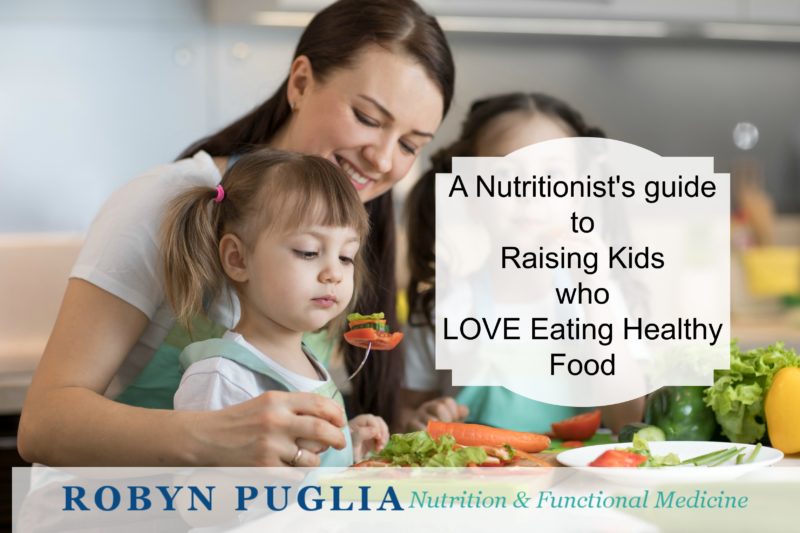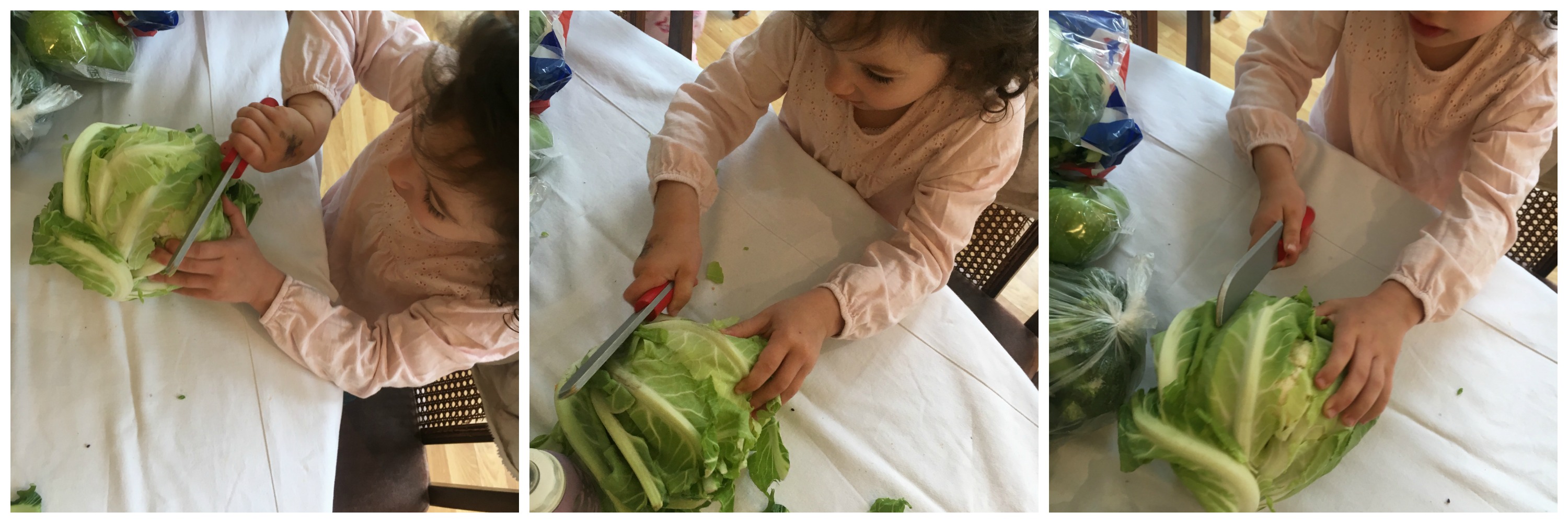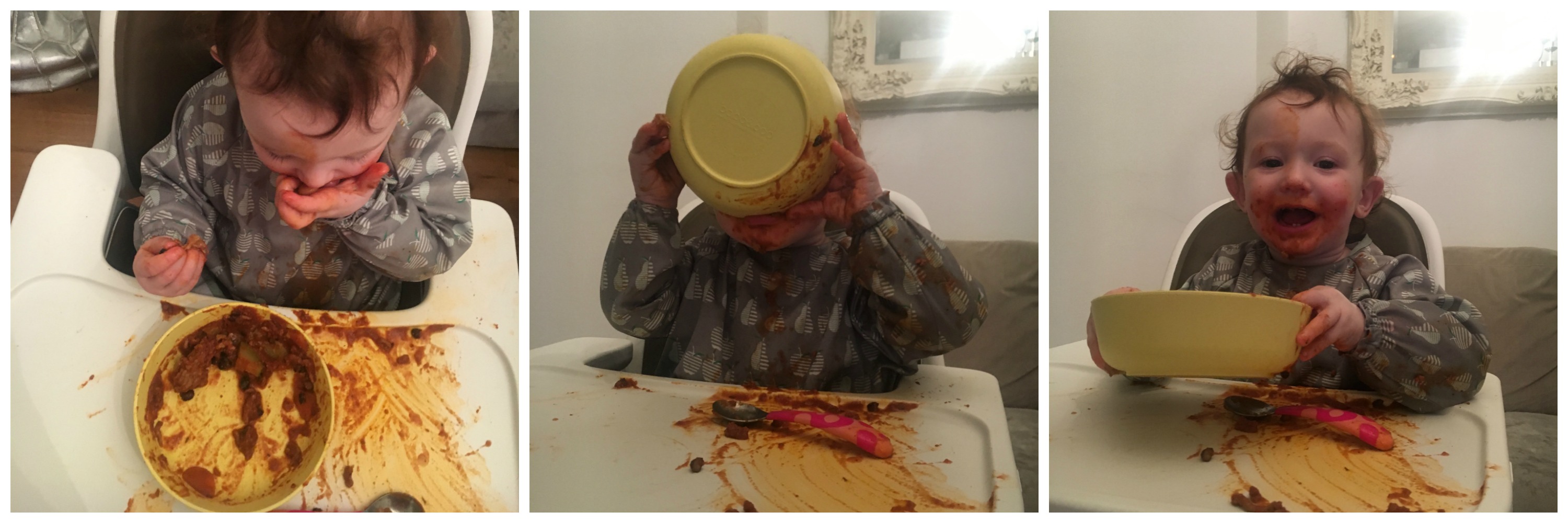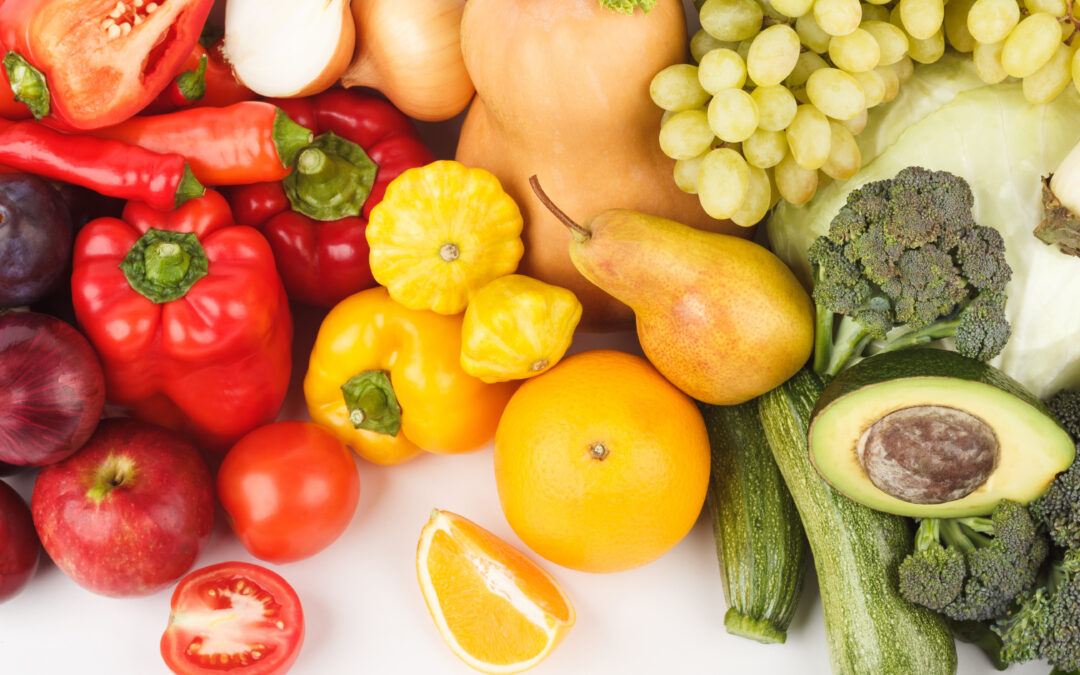I am super hesitant to write this down because I don’t want to tempt fate or jinx myself, but my kids love eating healthy food. How I get my kids to eat veggies and all the other food they eat is a question that I get fairly often.
Well firstly, I’m a nutritionist with coeliac disease and I used food to help me recover from chronic fatigue syndrome, so food is pretty central to the way I live my life.
I think it’s pretty important to teach healthy habits and train the palette from as early as you can. It’s much more difficult to convince a 12 year old that they like vegetables, if they haven’t really eaten them much before that age and now suddenly have to drastically change their diet in order to improve their health.
When my friends started having children (I had mine later than a lot of my friends) I got to see what worked and didn’t work for them (and I paid close attention). But of course having my own kids is where the majority of my real learning happened first hand.
I don’t profess to be an expert in this field, far from it. But as a nutritionist mum, it’s an area that I’ve got a big vested interest in. So here are the things that I think have worked for our family, and some that I’m sharing that I do in the HOPES it’s the right thing, but only time will tell.
Start before they are born
The first exposure your children have to food, is what you eat when you are pregnant with them. And if you breastfeed, that is their second exposure. Flavour and familiarity are both transferred to the foetus and your infant at these two times, so if you’re eating cornflakes for breakfast and a chicken sandwich for lunch with one measly slice of lettuce and tomato for lunch and then having lasagne or even salmon and potatoes for dinner, it will be much harder for you to convince your child that broccoli or butternut squash are for them.
However, even if that was the case and your child is a bit older now, it’s still 100% possible to make the changes you need to and have your kids eating and loving a broad range of healthy foods, if you are prepared for the next step….
YOU have to eat vegetables and healthy foods, if you want your kids to.
Eat together and model for them how you want them to eat. Sit at the table with them as often as possible, eat a variety of colourful vegetables and lots of different flavours and textures. You will be surprised at what your little child will happily scarf down, if you are eating it too. Children watch every single little thing we do and don’t do and they are not fools. If you don’t eat it, the chances are, they won’t either. There’s also the added aspect, that kids want to copy and emulate every thing that mama and daddy do! Both of mine would rather eat what I’m eating, if it’s different to what they are eating, even if they love what they have and don’t like what I have.
Make it normal and just the culture in your home.
What you DON’T say speaks volumes. You don’t have to lecture your kids about growing strong and healthy and nag them to eat better, just supply healthy food that tastes good as “This is Food”. You will have to navigate icecream, hula hoops, haribo etc at a certain point, but if you have already established fruit, vegetables, protein and healthy fat as the baseline, then you will have a much easier time of it when that day comes. I’m working on that side of things in my family currently (how to navigate hyper-palatable and hyper-processed foods outside the home) and I think it needs a separate post.
Make it easy.
Have veggies out where they can reach them and help themselves if they are old enough. And have veggies chopped and in the fridge so it’s easy for you to grab and give when they need a snack. Feed them veggies when they are hungry! There is a point every day, usually about half an hour before dinner is ready, when kids are STARVING. Give them a plate of veg at this moment. Chopped up fennel, sweet pepper, celery, carrot, cucumber or whatever you have to hand, and watch them wolf it down.
Also, I give my kids veggies as their main snack every day. As well as chopped fresh veg, I also cook one or two veg most mornings as finger food. I usually roast or bake, as it’s easy to do while I’m getting everyone ready, having breakfast etc. Favourites for my kids are cauliflower roasted with coconut oil and smoked paprika, baked new potatoes, roasted butternut squash, roasted Brussels sprouts.
It’s definitely a commitment as it’s extra work in the mornings, but when you do anything regularly it becomes habit and you can do it on autopilot.

Roasted butternut | A snack box for the park | Red pepper as a car snack (pretty messy) | Veggies ready for the oven.
Don’t give up the first, second or third time they say no.
Don’t make a big deal of it, just keep the food around and offer it again multiple times. I have found that for my two, fourth time seems to be the charm for a new food, even if they have acted like I’m trying to kill them with it the first three times.
Talk about food in a matter of fact way.
You are teaching them all sorts of facts about the world. Colours, shapes, animals, letters, sounds, the planets, the list is endless, teach about food and talk about food in the same way and at the same time. Don’t make it emotional or charged, just present facts and interesting tidbits for their information. Emotion will come in to it at a certain point when they are a little older and more out in the world.
Let them try EVERYTHING!
This sort of evolved naturally in my kitchen and I think it’s worked great. If my kids want to try something, then they can. Doesn’t matter what I think about it (unless of course it’s dangerous in any way). They have tried siracha, tabasco, raw potato, raw ginger, lemon, lime, pesto and chimichurri with a spoon, dried porcini muscrooms which they now eat like crisps (much to my continued amusement, those things stink!), and pretty much anything you can think of. I might say – “ooh, that’s a little spicy, maybe just try a little bit”, or words to that effect, but I don’t attenuate their autonomy or curiosity around food in this scenario. They are free to explore food as they want to (again, as long as it’s safe – they don’t have alcohol, honey before 1, something they might choke on because they aren’t developed enough to eat yet etc).
I also offer them a taste of everything I am eating from the time they have been weaning for a couple of months. Immunologically, I want them exposed to tiny quantities of a very broad amount of food, and again I like for them to explore and experience tastes and foods on top of what I am feeding them for the bulk of their actual food intake.
Never assume, or tell them, that they won’t like something
I never say ‘oh, you won’t like that’. I let them decide for themselves if they like it or not. They mostly do it turns out, eg the dried mushroom example.
Everybody gets the same meal
I don’t believe in ‘kids food’. I think Mark Hyman said “There is Food and there is Junk” and I think that’s applicable here too. When they are just learning how to eat of course I give some purees, finger foods and a baby-appropriate version of what we eat at that stage. Giving a 7 month old zoodles/courgetti just isn’t that practical. But very quickly, as soon as they seem ready to me and it’s developmentally appropriate, I start to incorporate the family meals. Both of my kids, from a very early age would compare what they were served with others around them. They look at their plate, then my plate, then the other kids plates. They know when they are being given something different and kids want to be the same! Well mine do anyway. They want to be the same as each other and the same and their father and I.
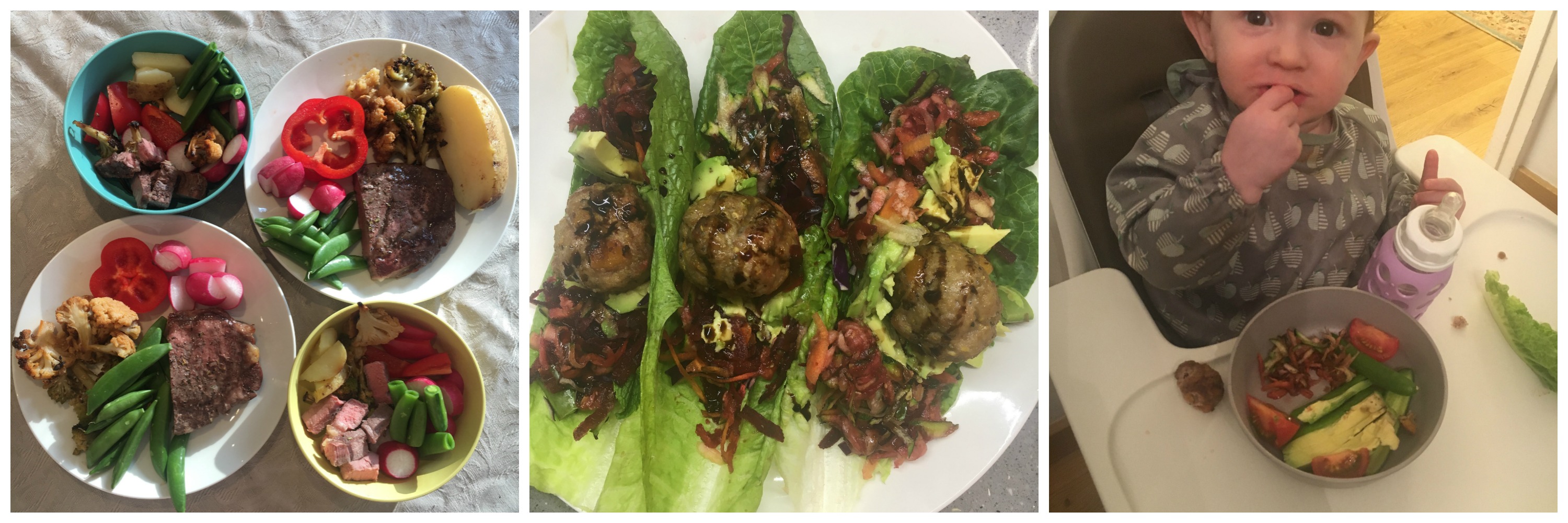
On the left, a family meal. Middle pic the adult version and right pic the child version of the same meal (exactly the same, just deconstructed).
Make it taste good!!
Do you have any idea how boring steamed broccoli is? It’s extremely boring. Do you know how yummy it is with some olive oil and herbs, or roasted with rosemary, or in a coconut-y thai-style sauce?
How often do you sit down to a plate of steamed cauliflower, plain. No butter, no olive oil, no seasoning of any kind. I imagine that it’s not very often. Now while I personally could happily sit and eat a mound of plain steamed veg, I am a nutritionist and many years into a deep love of veggies. That being said, I promise you veggies taste better and are more appealing to everybody with a little embellishing. And this is no different for little people.
Using herbs and spices to cooking adds layers of complexity and depth that makes food so pleasurable. And I want to train their tiny taste buds to appreciate the many subtle qualities of real food so they can recognise (and hopefully dislike) how artificial fast food is later on. I have been very surprised to find that both of my kids have loved chilli, made with cumin, chilli powder, thyme etc and a soup that I make with jalapeno, smoked paprika and cayenne pepper. Strong, quite spicy flavours and they both love those two and many other similar recipes.
Bake, roast, make soup, stir-fry, curries and dipping sauces all change the life of a humble veggie.
(Note, if you are trying to wean your kids away from processed foods and over to more whole foods, it can take a while for their palate to adjust. My observation is that it takes about 2 weeks when an adult goes cold turkey from processed to whole, so don’t despair and just be patient with the process. As their taste buds change, they will start to sense a lot more flavour and sweetness from fruits and veg that might actually taste like nothing to them currently if they have been blunted by hyper-palatable foods that contain a lot more sweet, salt and fat sensations than food found in nature).
Don’t force them to eat and try not to get stressed when they don’t eat
The number 1 thing that I say to my kids about food is the magic phrase: “You don’t have to eat that”.
I decide what goes on their plate and they get to decide what they will eat and how much of it. But that phrase takes ALL the charge out of a struggle. If Miss Two is being particularly Two at a meal time, I literally put the plate down and say to her, you don’t have to eat that. Adding if needed, But if you throw it on the floor you’ll get into trouble, lol. And then give her some space. 8/10 she will eat it when left to her own devices. And if they are not hungry, or don’t like something, then they don’t have to eat it and I’m not creating a battleground around it, which is good for everyone’s sanity. Kids go through phases of eating a lot and some other times where they eat very little, and I try and stay mindful of that. Maybe this is just a time where they are having a rest from growing and they don’t need as much fuel today. Lets honour that too and not panic about it. That mental pep talk has helped me a lot because I am a mum and it’s natural to feel anxious if your kid hasn’t eaten that much in a day.
Have them underfoot in the kitchen, often, and get them involved as much as possible.
You know what, having kids in the kitchen is a real mixed blessing. I find it very stressful because I don’t want to burn them or cut little fingers trying to grab something I’m chopping. And sometimes it’s really annoying when I’m trying to get dinner on the table and they are hungry and tired and clinging to my ankle. (in fact on those nights it’s better if they are not underfoot). But I’m really conscious not to segregate them away while I cook, just for my convenience. I want them to grow up in the kitchen with me. They very naturally want to be involved in everything I’m doing and to see what I’m doing, which isn’t easy, but they love it and I love that. I try to have them help me stir things (messy), to ‘chop’ things themselves when I am chopping (we currently use a toy knife for this exercise, and I am impressed by how much they can hack apart an ostensibly sturdy vegetable with a toy knife and willpower) and to make smoothies together. They also ‘help’ with adding salt, pepper, herbs and spices to a dish with me. Pro-tip – Pre-measure into your hand or a separate bowl or you’ll end up with half a tub of cayenne or salt thrown enthusiastically into a pot.
My kids also have a play kitchen, which they use all.day.long, and they have some toy kitchen things in my kitchen, so they can chop and stir alongside me with their own things. Of course this is not necessary, but I wanted to have that extra layer of exposure in there as this is important to me!
Talk, talk, talk
I narrate to them everything I’m doing and I ask their opinions. “I’m going to add some rosemary to this, because it’s so yummy with sweet potato. Do you think it needs some salt?”
Don’t get stuck in a specific diet dogma with your kids.
Allow yourself to be flexible and….
Don’t feel like it has to be perfect all the time
….or they won’t thrive, or that you’re a bad parent. We’re all just surviving. Do your best and have a lot of grace for yourself in the busy-tired-stressed-crazy days.
I let them get messy
Lastly, and I don’t know if this is good or bad, right or wrong, but I let my kids be and get messy when they eat. Of course I am trying to teach them good manners and to use cutlery properly etc, but I also want them to relax and enjoy their food and to fully explore it at this young age. And that apparently requires that they get food in their hair, on the wall, the floor and between their toes. I have tried all manner of bibs, floor coverings and what have you and in the end I decided that their relationship with food was more important to me than us looking Instagram worthy while eating, and spending an extra 15 minutes every day just cleaning up their eating area and soaking anything they refused to take off, was the price of admission for that one. Violet is reaching the age now where this is starting to naturally change (2.5), so I’ll be looking for Emily-post-style table-manners for toddlers tips now 🙂
Ok, so that’s pretty much what I do and have done, day in and day out with my kids and so far, so good. I am wide open to suggestions as well, so please do hit me up in the comments with what’s worked for you and your family or any other pearls of wisdom you have.
And happy eating to you all!

